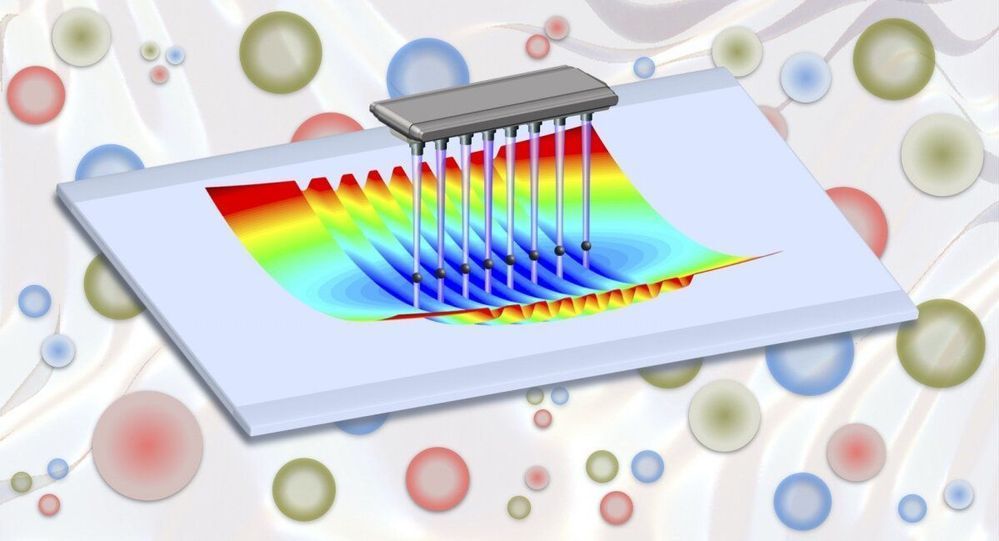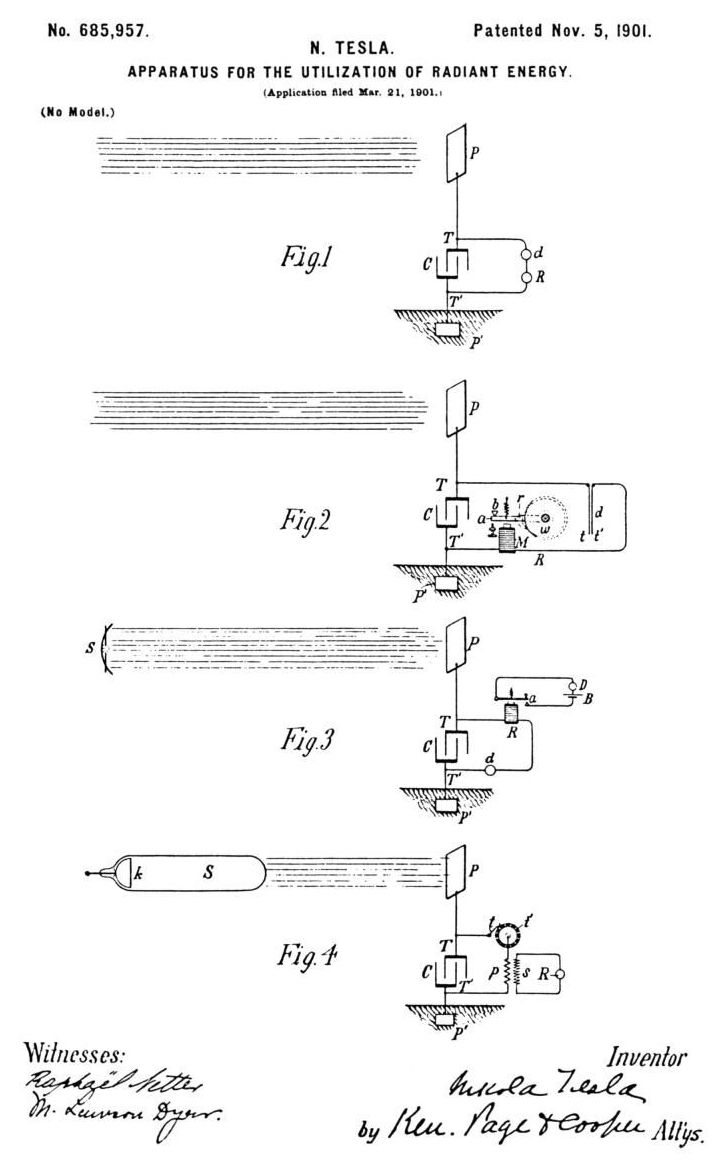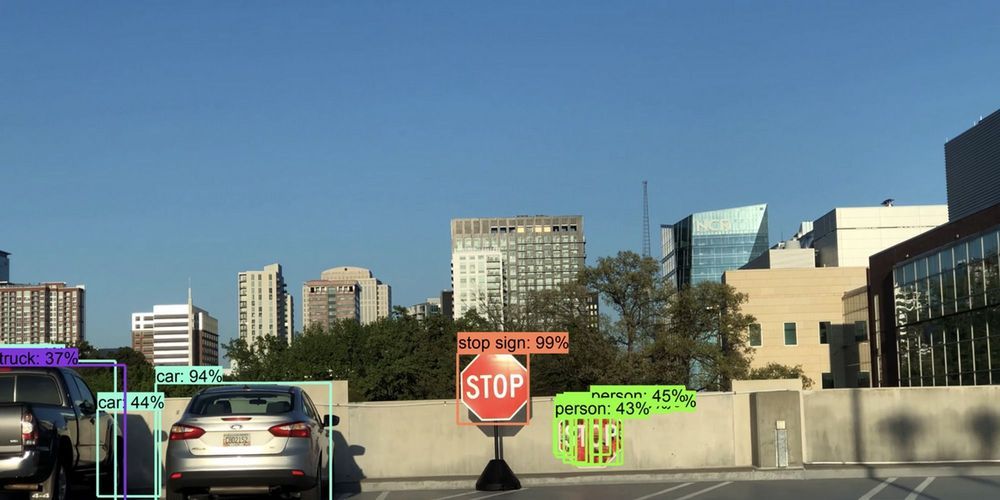Stelarc has suspended himself from hooks and had an ear surgically constructed on his arm. Now his Adelaide biennial work puts the audience at the helm.
In nuclear physics, like much of science, detailed theories alone aren’t always enough to unlock solid predictions. There are often too many pieces, interacting in complex ways, for researchers to follow the logic of a theory through to its end. It’s one reason there are still so many mysteries in nature, including how the universe’s basic building blocks coalesce and form stars and galaxies. The same is true in high-energy experiments, in which particles like protons smash together at incredible speeds to create extreme conditions similar to those just after the Big Bang.
Fortunately, scientists can often wield simulations to cut through the intricacies. A simulation represents the important aspects of one system—such as a plane, a town’s traffic flow or an atom—as part of another, more accessible system (like a computer program or a scale model). Researchers have used their creativity to make simulations cheaper, quicker or easier to work with than the formidable subjects they investigate—like proton collisions or black holes.
Simulations go beyond a matter of convenience; they are essential for tackling cases that are both too difficult to directly observe in experiments and too complex for scientists to tease out every logical conclusion from basic principles. Diverse research breakthroughs—from modeling the complex interactions of the molecules behind life to predicting the experimental signatures that ultimately allowed the identification of the Higgs boson—have resulted from the ingenious use of simulations.
Google Chrome has dominated the internet browser market for the last decade with a staggering near-60% market share and users stretching into the billions.
Rivals to Google Chrome, including Apple’s Safari, Microsoft’s Edge (formerly known as Internet Explorer), and Mozilla’s Firefox have largely failed to convince users to switch—but browser choices are becoming more complex.
Users’ desire for greater security, better privacy, and an ill-defined need to “take back control” from the likes of Google and Microsoft has opened the door for alternatives—including blockchain-based privacy browser Brave, whose chief executive thinks Google “is going to be taken apart over coming years.”
If you’ve been interested in nanotech, but have been too afraid to ask, here is an introductory and interesting article that I’d like to recommend.
My interest in nanotech is based on my hope that nanotech can lead to methods of constructing substrates that are suitable for mind uploading. It may lead to a technique to create duplicate minds.
“These ‘biological engineering’ technologies have made real one of the dreams of the nanotechnology pioneers: the deployment of molecular assemblers able to construct any shape with atomic precision, following a rational design.”
“…hybrid bioinorganic devices that mimic biological processes will soon be used in new computers and electronic devices.”
Ongoing clinical trial to test the effectiveness of vitamin C infusion to help fight against Covid-19:
2019 new coronavirus (2019-nCoV) infected pneumonia, namely severe acute respiratory infection (SARI) has caused global concern and emergency. There is a lack of effective targeted antiviral drugs, and symptomatic supportive treatment is still the current main treatment for SARI.
Vitamin C is significant to human body and plays a role in reducing inflammatory response and preventing common cold. In addtion, a few studies have shown that vitamin C deficiency is related to the increased risk and severity of influenza infections.
We hypothize that Vitamin C infusion can help improve the prognosis of patients with SARI. Therefore, it is necessary to study the clinical efficacy and safety of vitamin C for the clinical management of SARI through randomized controlled trials during the current epidemic of SARI.
We could essentially use deep learning to get to the theory of everything if we digitize all processes.
By Rajat Jain, SAP
No single technology can ever replace humans and their unique value. Yet, the addition of hyperautomation is opening a world of new possibilities for the strategic nature of the employee experience – turning highly manual, labor-intensive tasks into nearly no-touch, rules-based processes.
Unquestionably, hyperautomation brings businesses closer to their vision of an intelligent enterprise that is customer-centric and operationally efficient. But first, innovation teams will need to rethink how they will deliver this technology capability. According to McKinsey, 70% of such complex and large digital initiatives do not achieve their stated goals. So it’s no wonder that only 6% of executives are satisfied with the performance of these efforts.
WO2010143206A1 — Infinite engine
Posted in futurism
An infinitegine which electricity from magnetism of magnets directly is provided. The magnets are magnets. The infinitegine consists of magnets (M) which certain of magnetic field. The mobile rotating parts are made of ferromagnetic magnets and will do similar functions like spinning tops vertically aligned to the earth’s gravity. A motor is used to this spinning motion, and it has a function of putting the rotating part in the in rotary motion. The magnetic field of the magnets (M) can be used as anergy source.
It is contemplated that solving the problem of anxiety in finding an alternativeergy for coping with finite resources and exhaustion of fossil fuel resources would require a great deal of time even when mankind launches full-scale efforts and continues all-out efforts. The of an infinite power capable of supplying a clean, safe, infinite kineticergy for the and prosperity of human society with no need of consumable raw materials would improve the and wouldhance andrich the functionality thereof, would contribute to thehanced prosperity of human society, and wouldable city construction on not only the earth but also other planets.
Nikola Tesla Patents
Posted in energy
U NITED S TATES P ATENT O FFICE.
NIKOLA TESLA, OF NEW YORK, N. Y.
APPARATUS FOR THE UTILIZATION OF RADIANT ENERGY.
SPECIFICATION forming part of Letters Patent No. 685,957 dated November 5, 1901.
Application filed March 21, 1901. Serial No. 52,153. (No model.)
Is that a person or a stop sign? Intel and Georgia Tech are spearheading efforts against adversarial attacks that fool machine learning systems into making such mistakes.
Photo: Georgia Institute of Technology.







